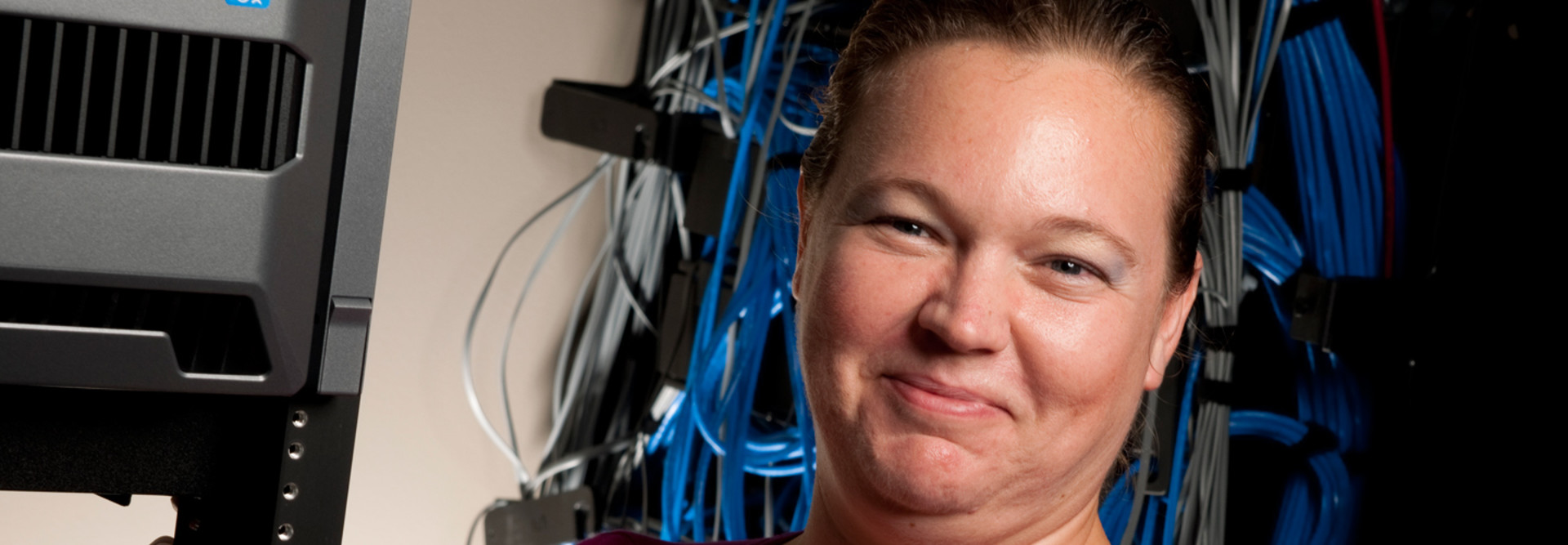More Companies Say Goodbye to Windows XP
Specified Technologies Inc. — known as STI — knew it had to wean itself off the Microsoft Windows XP operating system that it had been running for over a decade.
After supporting Windows XP for 12 years, longer than any other version of Windows, Microsoft closes the door on the veteran OS next spring. Beginning April 8, it will no longer provide upgrades, fixes or security patches for XP.
Large enterprises with Premier support contracts can negotiate a custom support agreement with Microsoft to continue to get critical updates — provided they’re willing to pay an estimated $200 per device for the first year, and more each year thereafter.
Slow to Make the Switch to Newer Windows OS
Like most SMBs, STI, a Somerville, N.J.-based maker of fire protection systems for the construction industry, can’t afford to pay for the privilege of running an OS that Microsoft intends to shutter for good. There were basically two options, says Paula Powers, the IT tech in charge of PC support: either move forward with an OS upgrade or prepare to run XP without a safety net. STI decided to move to Windows 7 in phases.
Businesses haven’t lacked for upgrade opportunities. After all, Microsoft has launched three new versions of Windows since XP, and it offers free tools to help with upgrades.
Running older hardware and OSs, regardless of flavor, drives user productivity down and support costs up. A 2012 IDC study of XP installations estimates that the cost of user productivity downtime climbs from $177 in year two to $324 by year five of deployment, with IT support costs going from $451 to $766 over the same span. An OS comparison shows that businesses incur annual costs of $870 per PC to run XP versus $168 for Windows 7.
If these costs aren’t motivation enough, there’s been speculation that cybercriminals have been holding some powerful hacks in reserve, biding their time until Microsoft stops issuing security patches.
Why, then, do so many business PCs worldwide still run XP? Often-cited reasons include application upgrade costs, unforeseen complications, insufficient IT resources and the belief — or hope — that sticking with XP, an OS hardened by years of improvements, won’t compromise security.
Then there’s the matter of timing: XP’s exit happens to coincide with BYOD’s big entrance onto the corporate computing stage, creating an ambivalence that’s paralyzed some IT leaders.
“Migration difficulties aren’t that hard to overcome if you’re willing to spend the money to replace any problematic applications and just upgrade your OS,” says Al Gillen, IDC program vice president for system software. Therein, he thinks, lies the problem. “With the growing emphasis on tablets and smartphones, businesses aren’t as willing to invest in a dimension of IT they see as becoming less important over time.”
One Group at a Time
At STI, an IT team of two supports 115 employees: 50 people in the main office, and sales and administrative staff working out of satellite offices throughout North America, Europe, South America, Asia and the Middle East.
Plans for migrating to Windows 7 call for first upgrading PCs and notebooks at headquarters and then notebooks in the field, Powers says. The schedule builds in flexibility to accommodate out-of- warranty machines that break prior to their upgrade date.
STI has already migrated about 75 percent of headquarter machines as well as a few field staff systems. “We don’t push software to devices,” Powers says. Instead, she upgrades machines individually based on a standard hard-drive image tailored for each department.
Powers frequently has reps prepare for their scheduled upgrade by backing data up to external drives. For U.S. sales staff, she remotely connects to their old machines via Citrix GoToAssist and moves any remaining files to the drive herself. Powers then transfers everything from the drive to the new standard-image notebook, which is shipped in advance of the process.
To avoid network connectivity complications, STI plans to take advantage of its corporate sales meeting in March to upgrade the notebooks of international employees and complete the migration project.
Part of a Grand Migration Plan
Unlike some IT leaders, the IT head at Juno Lighting, a lighting solutions and controls provider headquartered in Des Plaines, Ill., wasn’t conflicted about how to handle the company’s XP installation. While the migration was indeed driven by Microsoft’s end-of-support announcement, it was viewed as a strategic opportunity rather than a harsh mandate.
“Despite XP’s age, we were comfortable with it from a reliability and security perspective, but we decided to migrate with a view toward the strategic IT benefits we’d gain,” says Director of IT Ron Mathis, who supervises a team of eight in Illinois and three in Fishers, Ind., which supports just under 1,000 employees in those locations and in distribution centers in California, Pennsylvania, Texas and Ontario.
Though Juno had to upgrade 600 desktops and 100 notebooks to Windows 7, the physical migration wasn’t difficult thanks to the intensive planning, programming and testing effort that preceded it. During this phase, the IT team determined the make and model of every device in its fleet, culling those that couldn’t efficiently run Windows 7. For the 20 percent that didn’t make the cut, Mathis got signoff to lease new machines, a practice the company will use going forward to save money and ensure a regular refresh schedule.
“Getting an accurate account of the fleet was a challenge because we don’t have a sophisticated automated tool to inventory devices,” says Mathis. Other challenges included inventorying applications to determine Windows 7 compatibility, mapping the migration process and developing the underlying infrastructure to enable ongoing management of the process for future deployments.
Juno benefitted from Mathis’ experience working on Windows migrations at some very large companies. “I learned what was possible with low-tech scripting technologies,” he says.
The company set up a scripting process that first backed up user data to an external drive, then imaged the machine’s hard drive, formatted it and laid down a Windows 7 image with a standard set of applications. After testing that, IT workers added software drivers for all workstation models and tested each configuration.
Next, they used Microsoft imaging technology to capture an image of each model’s hard drive, placing them all in an image file. To perform upgrades, the IT team put this image file, supporting software and script on a flash drive, plugged it into a machine and directed it to install Windows 7.
“You're back after a couple of hours, and the machine’s got Windows 7 on it, configured for Juno’s environment, with all the correct applications, appropriate folders, and user data restored,” Mathis says.
Out with the Old
Such preparation is necessary for a successful OS migration of this kind. “Before moving to live production, we tested our accounting, invoicing and other proprietary software on VMware for a couple of months to make sure everything would run on Windows 7,” STI’s Powers says.
Learn more about XP Migration: cdw.com/windowsxpendoflife
For its part, Chicago-based i.c.stars has let XP upgrades occur naturally as slow or broken machines need to be replaced, says Eric Lannert, vice president for operations and technology for the technology training and workforce development firm. Of its 30 XP-preloaded computers, just two remain.
The company no longer runs IT operations on-premises, choosing to migrate all functions to cloud-based services to offload IT tasks and improve network access for remote workers. “Going to a cloud model makes upgrading from XP much easier, because you don’t have to configure the domain, file sharing and network to add Windows 7 machines,” Lannert says.









